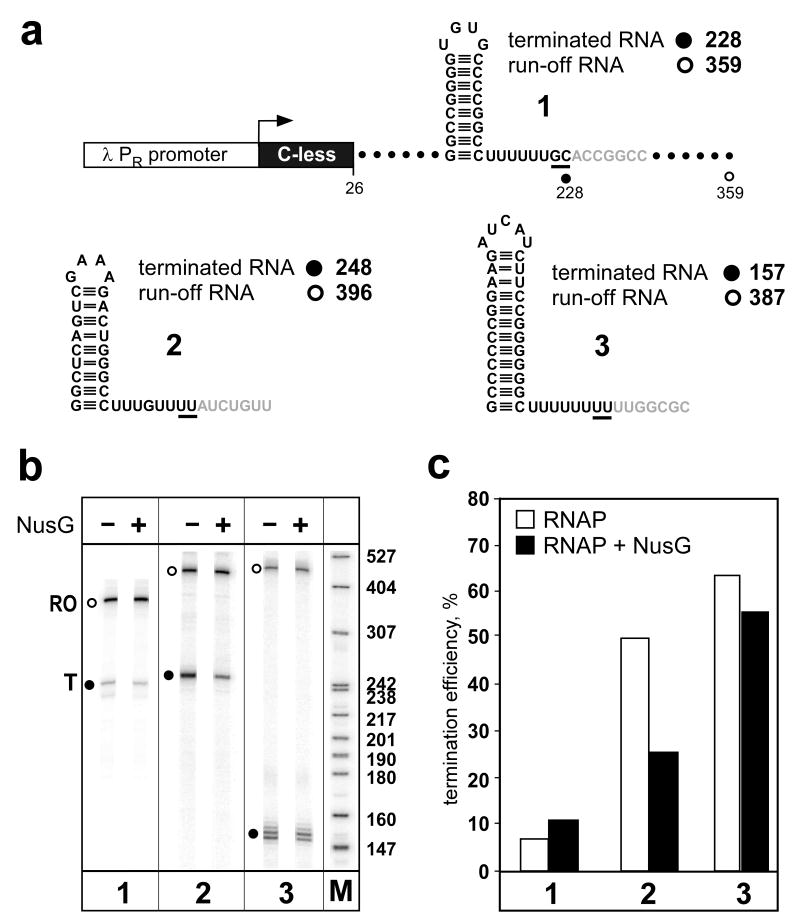Fig. 2.
Differential effect of NusG protein on termination at three representative intrinsic terminators. (a) Template structure. All three templates share the λ PR promoter and the 26 nt C-less ITS; the downstream regions differ and each encodes an RNA hairpin followed by a U-rich region. The sizes of the terminated and run-off RNA products are shown. (b) Products of the single-round termination reactions. Reactions were carried out as in 2.5) with E. coli RNAP and E. coli NusG (added at 100 nM where indicated). RNA products were separated on a 6% denaturing gel; terminated (T, filled circles) and run-off (RO, open circles) RNAs are indicated for each terminator. The “M” lane was loaded with [32P]-labeled pBR322 MspI digest, with sizes indicated on the right; note that the RNA species migrate more slowly than the DNA fragments of the same size. (c) Quantification of termination efficiency. Termination efficiency is defined as the fraction of RNA at the terminator (T) relative to the total RNA (which equals the sum of T and RO if no other products are present). The three terminators tested differ in their termination efficiencies as well as in their response to NusG.

